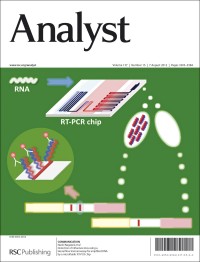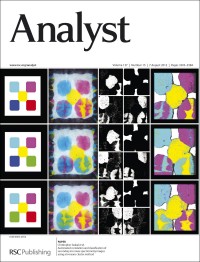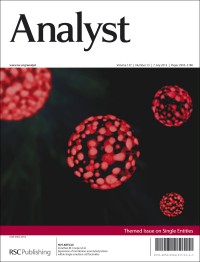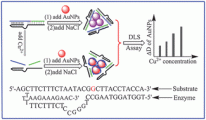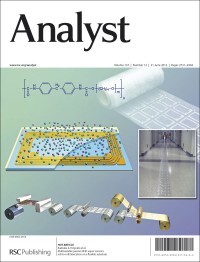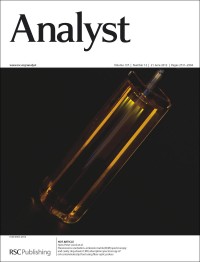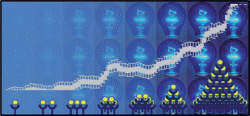This issue’s HOT articles feature the use of ligand–receptor interactions in 13C MRI, metal–organic framework MIL-101(Cr) microcrystals for rapid magnetic solid-phase extraction, odorant biosensors, SR-FTIR micro-imaging of latent fingerprints, a new fluorescent and colorimetric Cu2+ probe, and an efficient fluorescent probe mimicking multiple logic gates and a molecular-keypad lock.
All these papers will be free to access for 2 weeks.
Generating contrast in hyperpolarized 13C MRI using ligand–receptor interactions
Kayvan R. Keshari, John Kurhanewicz, Jeffrey M. Macdonald and David M. Wilson
Analyst, 2012, 137, 3427-3429
DOI: 10.1039/C2AN35406C
Facile magnetization of metal–organic framework MIL-101 for magnetic solid-phase extraction of polycyclic aromatic hydrocarbons in environmental water samples
Shu-Hui Huo and Xiu-Ping Yan
Analyst, 2012, 137, 3445-3451
DOI: 10.1039/C2AN35429B
Dissociated neuronal culture expressing ionotropic odorant receptors as a hybrid odorant biosensor—proof-of-concept study
Norio Tanada, Takeshi Sakurai, Hidefumi Mitsuno, Douglas J. Bakkum, Ryohei Kanzaki and Hirokazu Takahashi
Analyst, 2012, 137, 3452-3458
DOI: 10.1039/C2AN35058K
Detection of microscopic particles present as contaminants in latent fingerprints by means of synchrotron radiation-based Fourier transform infra-red micro-imaging
A. Banas, K. Banas, M. B. H. Breese, J. Loke, B. Heng Teo and S. K. Lim
Analyst, 2012, 137, 3459-3465
DOI: 10.1039/C2AN35355E
A new fluorescent and colorimetric probe for Cu2+ in live cells
Wei-Yong Liu, Hai-Ying Li, Bao-Xiang Zhao and Jun-Ying Miao
Analyst, 2012, 137, 3466-3469
DOI: 10.1039/C2AN35559K
Fluorescent probe mimicking multiple logic gates and a molecular keypad lock upon interaction with Hg2+ and bovine serum albumin
Arvind Misra, Priyanka Srivastava and Mohammad Shahid
Analyst, 2012, 137, 3470-3478
DOI: 10.1039/C2AN35561B
![]() Don’t forget to take a look at the cover articles from Issue 15.
Don’t forget to take a look at the cover articles from Issue 15.












